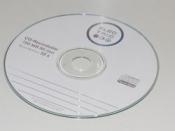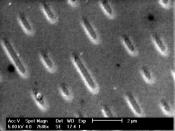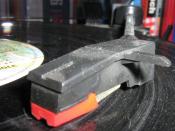How a Music CD works
If you could stretch out into a straight line all the data stored on a single compact disc, it would be over 4 miles long.
All compact discs and other optical disc players read from the inside of the CD out, just the opposite of a vinyl record. The inner þ inch radius region is for clamping, followed by a thin text band used to usually identify the manufacturer. These regions do not contain data and are not affected by scratching or other damage.
In a music CD, the first inner band of data called the lead-in, contains the table of contents for the CD. It tells the CD player how to navigate around the disc (where to find the music tracks). Scratches or other damage can make the CD unplayable. The song tracks begin just outside the lead-in.
A full CD holds a maximum of 74 minutes of music.
When a disc isn't full the outer portion of the CD looks blank. Damage in the blank area has no effect on the playability of the CD. You can usually identify the lead-in and blank regions because they reflect light a little bit differently, mostly visible when looked at an angle from a light. Although it is difficult to see individual tracks, they can sometimes be identifies by very thin rings that separate them.
Unlike a vinyl record, which is read by a needle which lies between the grooves, a CD is read by a laser beam reading the data. The laser beam enters the CD on the play side, travels through the CD's clear plastic layer, picks up information from the data layer, and then bounces off the reflective coating on the back side of the data layer. The reflected laser...



How cds work
lots of info, good job could have been better.
2 out of 2 people found this comment useful.